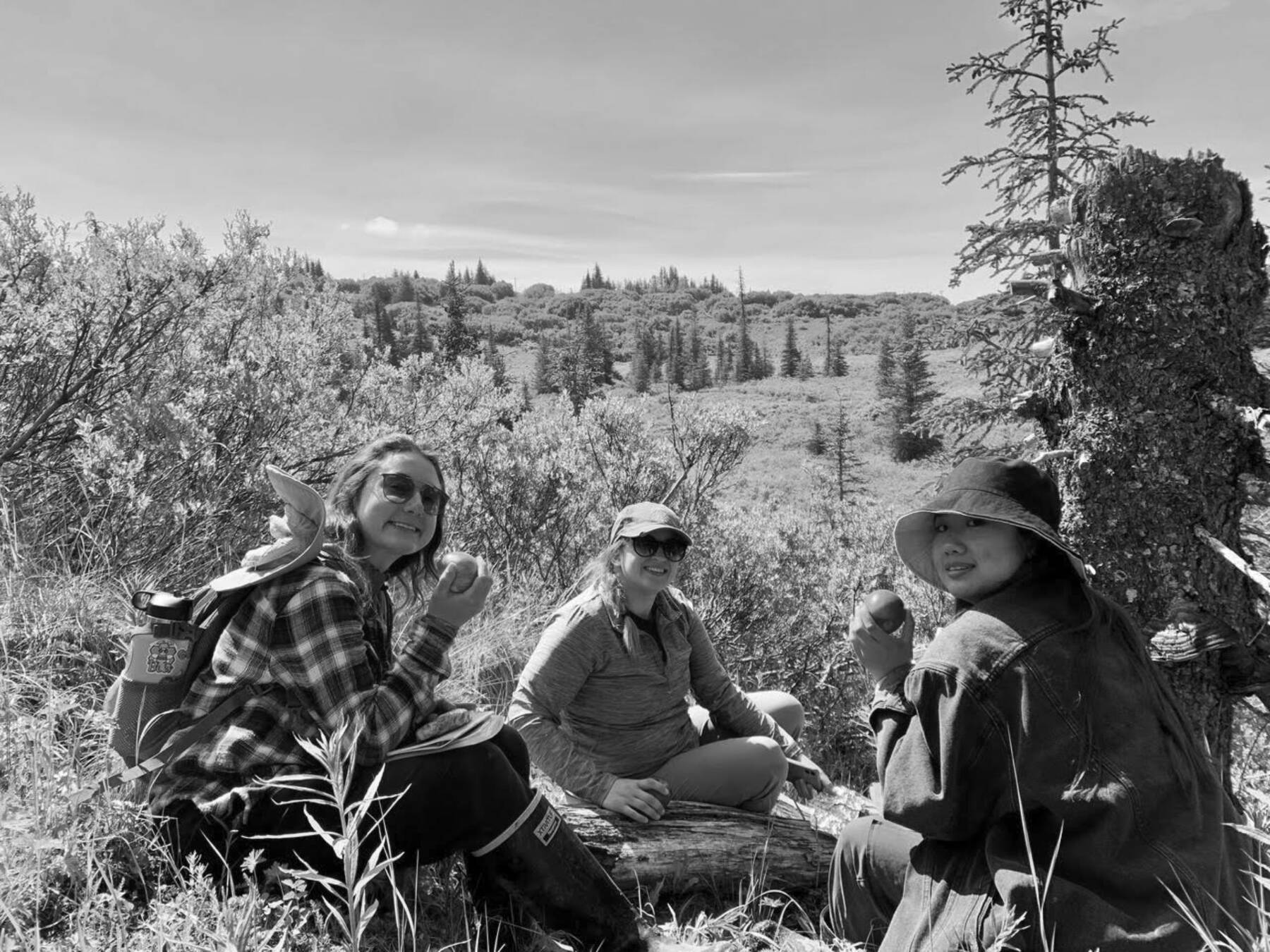Over six weeks in the Summer of 2022, Esther Chiang, Riley Glancy, Nikita Hahn, Hannah Hicks, Linfeng Li and Zhangyanyang Yao, a group of graduate students from the University of Michigan School for Environment and Sustainability, worked with the Center for Alaskan Coastal Studies to do research and conduct a feasibility assessment on the reintroduction of beavers to the Inspiration Ridge Preserve (IRP). The IRP is a 700-acre wildlife habitat off of Skyline Drive, now managed by CACS after being donated by Nina Faust and Ed Bailey. The IRP is focused on education and conservation of the local land and animals and limits the daily number of visitors to keep the land in its conserved state.
The team’s research consisted of a beaver habitat suitability assessment in the IRP, which involved surveying vegetation, hydrography and hydrology data from Fritz Creek to understand the potential of the site to sustain beavers once again. Beavers previously roamed the IRP, but have not been seen for about 25 years, resulting in the IRP and its peatlands to dry up, release carbon at higher rates, and decrease water availability.
Beavers are an important asset to the environment, and can address issues of water scarcity and peatland drying with their natural dam building, resulting in the creation of ponds and tunnels underground, connecting water sources, recharging groundwater and improving the habitat for other wildlife to coexist. This is especially important for the Kenai Peninsula, where warming climate trends have caused a loss of water sources and an increase in drying peatlands.
Through data collection and analysis, the team determined that this area of the IRP is suitable for beaver habitation. The area has plentiful vegetation for food and building materials, signs of historic beaver presence with some dam relics, adequate habitat size, and ease of access for beaver reintroduction and continued monitoring for success. Though the area is deemed suitable, some of the hydrology factors are less than ideal, including low stream depth and lack of deep pools for beaver protection.
With this information, we are proposing implementation of Beaver Dam Analogs (BDAs) to increase the stream depth and ponding before beavers are reintroduced. Beaver Dam Analogs are human-built structures that mimic the dams that beavers build. These structures are intended to be temporary and are constructed of naturally existing materials within the IRP. They will be implemented at points along the stream to increase the necessary hydrological factors in order for beavers to be introduced and take over the maintenance and eventually, to build their own dams.
Our work on this project was completed in April 2023 with the conclusion of our capstone experience. With the researched area within the IRP determined highly suitable for beaver reintroduction, we are eager for the next steps to prepare for a reintroduction. Due to the IRP’s status as conserved land, approval from the Kachemak Heritage Land Trust (KHLT) to alter anything within the IRP needs to be received. Our team worked with Joel Cooper of KHLT to receive approval to implement BDAs along the Fritz Creek to support the increase in stream levels for a successful beaver reintroduction. As of April 2023, approval for one (1) BDA to be installed along the Fritz Creek has been received and is the next step to bringing beavers back to the Kenai Peninsula.
Nikita Hahn is a graduate student and researcher at the University of Michigan.



